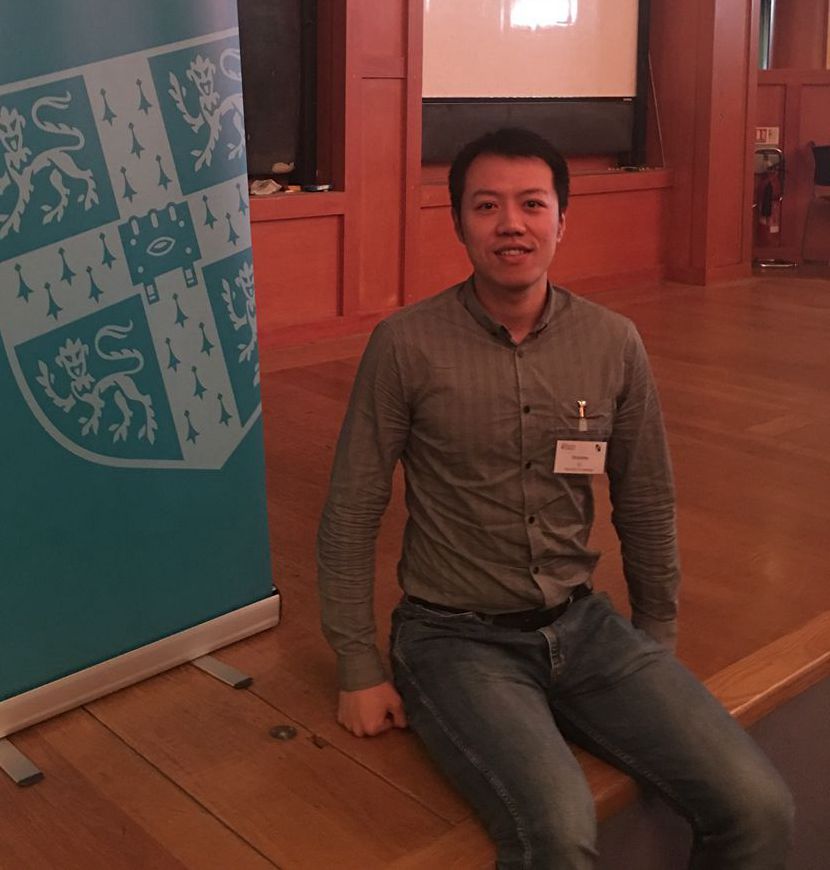Research
- September 12, 2020
- by
- lsrblog
Publications
• When Will the Covid-19 Pandemic Peak? (with Oliver Linton)
Journal of Econometrics, Volume 220, Issue 1, September 2020, Pages 130-157
– We carry out some analysis of the daily data on the number of new cases and the number of new deaths by (191) countries as reported to the European Centre for Disease Prevention and Control (ECDC). Our benchmark models are a quadratic model, a quartic model and a gamma model of time trends, which are applied to the log of new cases and deaths for each country. We use our model to predict when the peak of the epidemic will arise in terms of new cases or new deaths in each country and the peak level. We also predict how long the number of new daily cases in each country will fall by an order of magnitude. Finally, we forecast the total number of cases and deaths for each country. We also consider two models that link the joint evolution of new cases and new deaths.
• First Discussion Meeting on Statistical Aspects of the Covid-19 Pandemic (with Shuyi Ge and Oliver Linton)
Journal of the Royal Statistical Society: Series A (Statistics in Society), Volume 185, Issue 4, October 2022, Pages 1836–1837
-Discussion Contributions
• Dynamic Peer Groups of Arbitrage Characteristics (with Shuyi Ge and Oliver Linton)
Journal of Business & Economic Statistics, 2024, VOL. 42, NO. 2, 367–390
Keywords: Semiparametric; Characteristics-based; Asset pricing; Power-enhanced test;
– We propose an asset pricing factor model constructed with semi-parametric characteristics-based mispricing and factor loading functions. We approximate the unknown functions by B-splines sieve where the number of B-splines coefficients is diverging. We estimate this model and test the existence of the mispricing function by a power-enhanced hypothesis test. The enhanced test solves the low power problem caused by diverging B-spline coefficients, with the strengthened power approaches to one asymptotically. We also investigate the structure of mispricing components through Hierarchical K-means Clusterings. We apply our methodology to CRSP (Center for Research in Security Prices) and Compustat data for the US stock market with one-year rolling windows during 1967-2017. This empirical study shows the presence of mispricing functions in certain time blocks. We also find that distinct clusters of the same characteristics lead to similar arbitrage returns, forming a “peer group” of arbitrage characteristics.
• News-Implied Linkages and Local Dependency in the Equity Market (with Shuyi Ge and Oliver Linton)
Journal of Econometrics, Volume 235, Issue 2, August 2023, Pages 779-815
Keywords: Spatial asset pricing model, weak and strong cross-sectional dependence, local dependency, networks, textual analysis, big data, large heterogeneous panel
– This paper studies a heterogeneous coefficient spatial factor model that separately addresses both common factor risks (strong cross-sectional dependence) and local dependency (weak cross-sectional dependence) in the equity returns. From the asset pricing perspective, we derive the theoretical implications of no asymptotic arbitrage for the heterogeneous spatial factor model. In empirical work, it is challenging to measure granular firm-to-firm connectivity for a high-dimensional panel of equity returns. We use extensive business news to construct firms’ links via which local shocks transmit, and we use those news-implied linkages as a proxy for the connectivity among firms. Empirically, we document a considerable degree of local dependency among S&P 500 stocks, and the spatial component does a great job in capturing the remaining correlations in the de-factored returns. We find that adding spatial interactions to factor models reduces mispricing and mean-squared errors. We also show that our news-implied linkages provide a comprehensive and integrated proxy for firm-to-firm connectivity, and it out-performs other existing networks in the literature.
Working Papers
Augment Large Covariance Matrix Estimation with Auxiliary Information (with Shuyi Ge, Oliver Linton Weiguang Liu and Wen Su) Code
–We propose two novel frameworks that incorporate auxiliary network information into the estimation of large covariance matrices \textemdash Network Guided Thresholding and Network Guided Banding. Compared with existing methods which either ignores network information (e.g., the thresholding or shrinkage estimator) or imposes overly restrictive structure (e.g., the banding estimator), our proposed estimators take advantage of the auxiliary network information available in the era of big data. Our two estimators are designed to adapt to the specific features of the auxiliary network information at hand and to different structures of the covariance matrix. We show that both Network Guided estimators have great convergence rates over a larger class of sparse covariance matrices. Simulation studies indicate that these estimators generally outperform other purely statistical methods, particularly when the true covariance matrix is sparse and the auxiliary network provides reliable information. Empirically, we apply our methods to estimate the covariance matrix of asset returns using various forms of auxiliary network data to construct the Global Minimum Variance (GMV) and Mean-Variance Optimal (MVO) portfolios, which deliver better out-of-sample results compared to competitors.
Diamond Cuts Diamond: News Co-mention Momentum Spillover Prevails in China (with Shuyi Ge and Hanyu Zheng)
Minor Revision at Journal of Banking and Finance
-We conduct a comprehensive study on momentum spillovers in the Chinese stock market using various types of economic linkages, with particular attention to momentum spillover via news co-mention linkages. We utilize millions of Chinese business news articles and develop a flexible and innovative algorithm to identify linkages among listed firms. We find that news co-mention momentum spillover is stronger than others, unifying various forms of momentum spillover effects in the Chinese market and replacing the role of analyst co-coverage seen in the U.S. News co-mention identifies a wide range of economically important linkages, particularly recovering more cross-industry linkages than other link identification methods, which could contribute to its strong performance.
Decoding Cross-Stock Predictability: Peer Strength versus Firm-Peer Disparities (with Doron Avramov, Shuyi Ge and Oliver Linton)
-This paper introduces the Peer Index (PI) and Peer-Deviation Index (PDI), leveraging industry peer connections and regularized regressions to predict stock returns. PI measures industry strength, while PDI assesses a firm’s relative position within its industry. Excluding the bottom 20% of stocks by market cap, both indices consistently forecast returns, particularly in the long leg, over recent years, and extended horizons. The results highlight the market’s insufficient response to peer-relevant information and underscore the importance of industry analysis in understanding cross-stock predictability and identifying mispricing.
Information Structure, Processing Costs and Cross-firm predictability: A Tale of Two News-implied Linkages (with Shuyi Ge and Hanyu Zheng)
-This paper investigates how different structures of information presentation in financial news affect investors’ processing costs and subsequently influence market dynamics, particularly the speed of cross-firm price discovery. We analyze two types of news-implied links with distinct co-mentioning structures: leader-follower (LF) and peer (PE) links, each involving different information processing costs. We empirically find that LF links, which are less costly to process, result in faster attention spillovers (183 %), as measured by abnormal search volume indices (ASVI), and weaker cross-stock momentum (52 % less per month), as shown by portfolio analysis, compared to PE links. Controlling for endogenous factors that could affect co-mentioning structures, our results show that news formatting independently and significantly influences market outcomes through its interaction with investors’ processing costs.
Working in Progress




